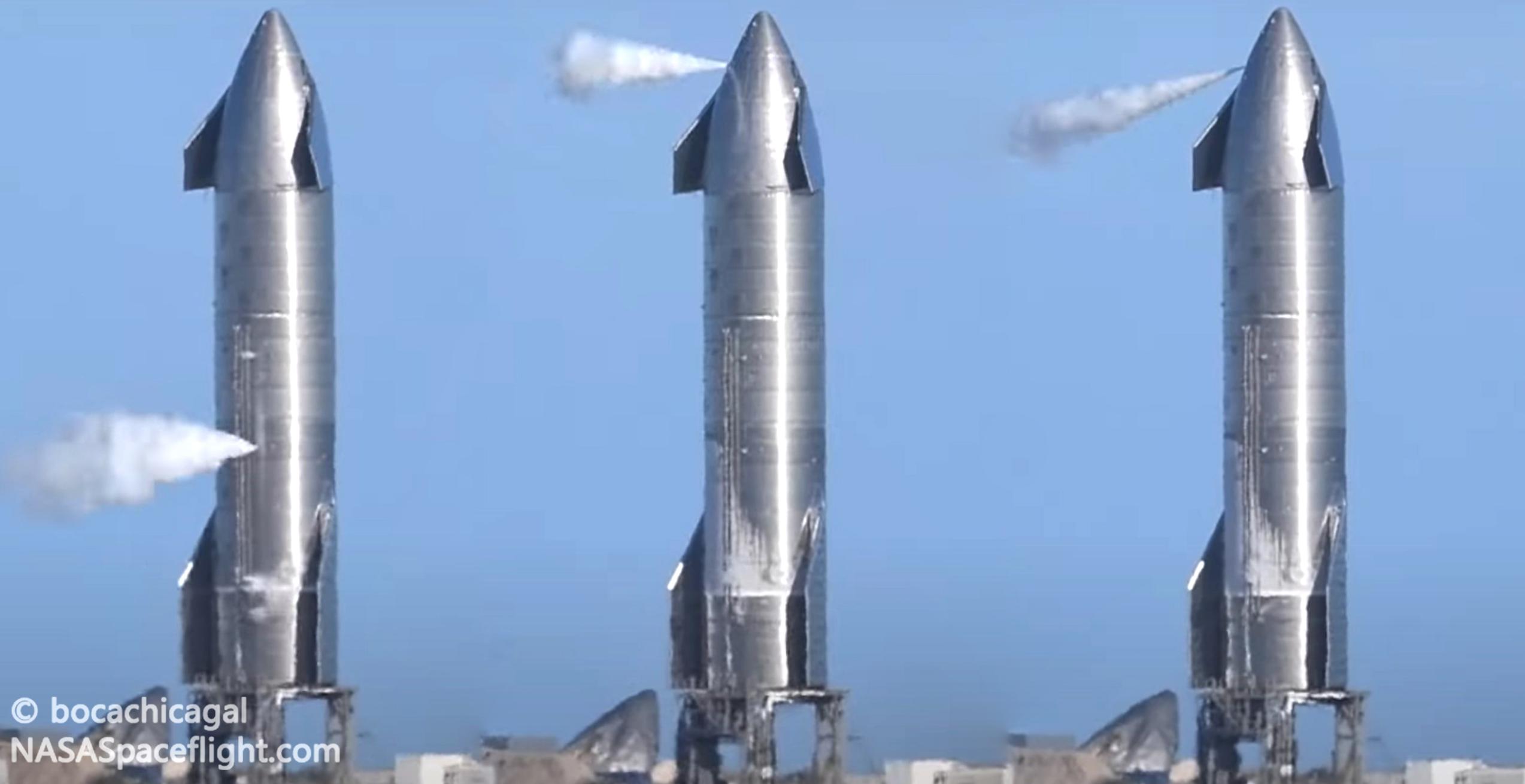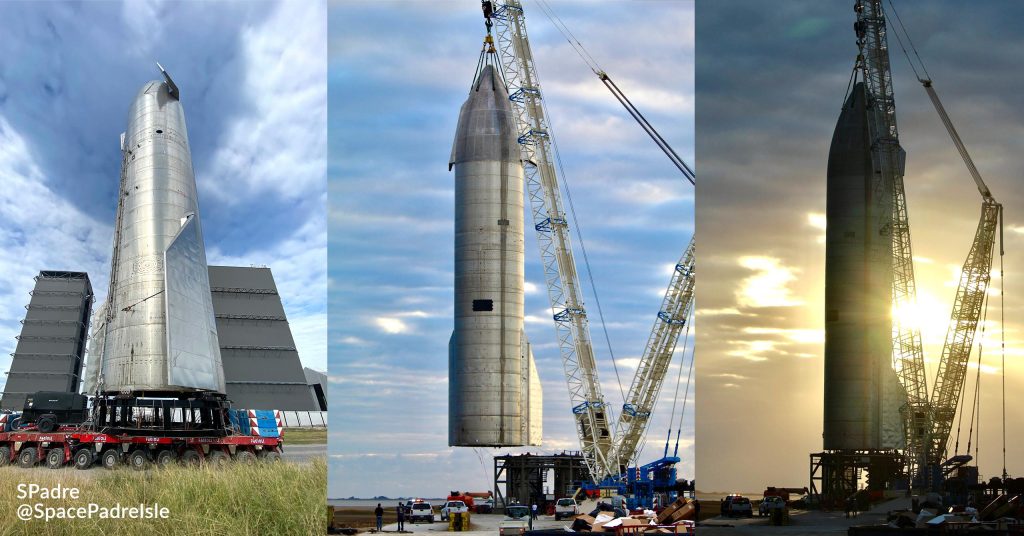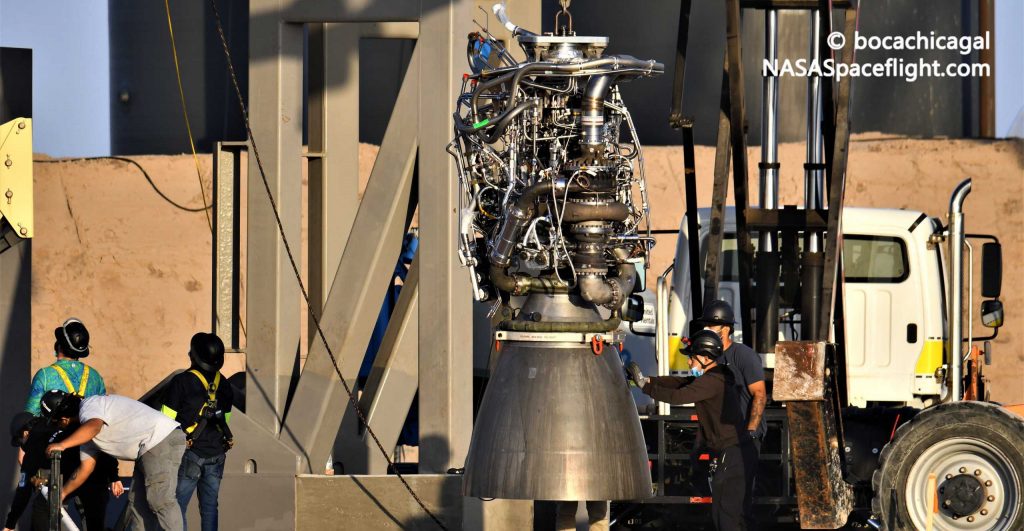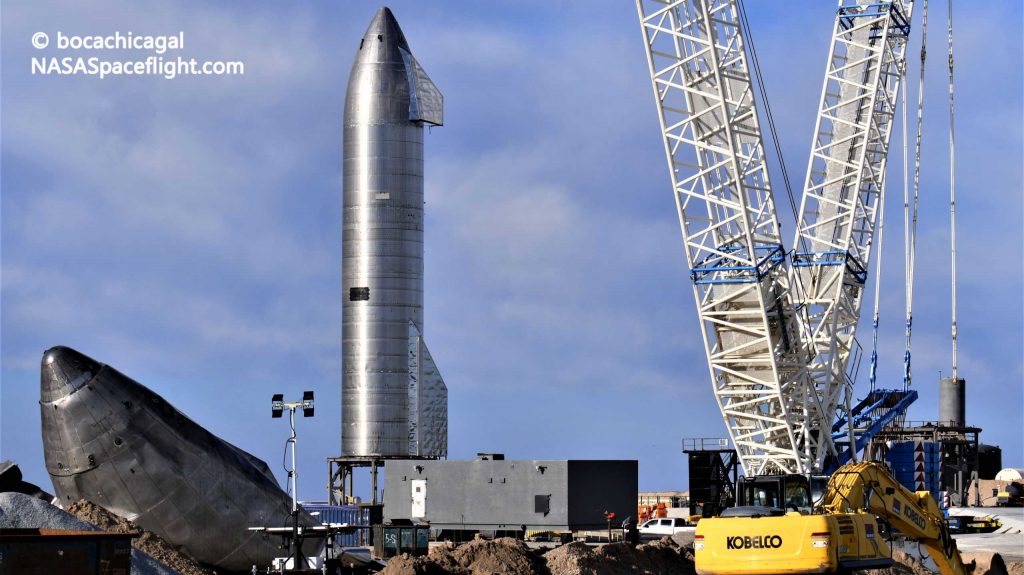

News
SpaceX’s next Starship gets frosty to prepare for first launch
One week after the rocket was rolled from the factory to the launch pad, SpaceX appears to have successfully put Starship serial number 9 (SN9) through two routine pre-launch tests.
On December 22nd, significantly less than two weeks after Starship SN9 suffered a significant handling or production accident that caused it to tip several degrees and impact the walls of its production facility, SpaceX wrapped up speedy repairs and transported the rocket about 1.5 miles down the road.
In some combination of a minor miracle and Starship’s exceptionally sturdy design, the rocket – standing ~50 meters (~165 ft) tall and weighing around 75 to 100 metric tons (175,000-220,000 lb) – tipped sideways onto two of its four pre-installed flaps. Despite being subjected to off-nominal forces, the far stronger structural mechanisms connecting those flaps to Starship’s main airframe were seemingly unharmed and SpaceX was able to remove and replace the crumpled control surfaces mere days after the incident.

On December 28th, that work began in earnest with what is generally known as an ambient temperature pressure test, filling Starship SN9’s propellant tanks with benign air-temperature nitrogen gas. Used to check for leaks, verify basic vehicle valve and plumbing performance, and ensure a basic level of structural integrity, SN9 appeared to pass its ambient proof test without issue – albeit late in the window.
Testing wrapped up on Monday shortly after the ambient proof and was followed by the main event – a cryogenic proof test – a bit less than a day later on Tuesday. The exterior of Starship SN9 began to develop a coating of frost after SpaceX started loading its oxygen and methane tanks with liquid nitrogen around 2:30 pm CST (UTC-6). While used similarly to verify structural integrity like an ambient pressure test, a ‘cryo proof’ adds the challenge of thermal stresses to ensure that Starship can safely load, hold, and offload supercool liquids.
In SN9’s case, it’s unclear if SpaceX fully or only partially loaded the rocket’s main propellant tanks with liquid nitrogen, while a lack of frost at the tip of its nose implies that the Starship’s smaller liquid oxygen ‘header’ tank wasn’t filled as part of the test. Altogether, Starship should be capable of holding roughly 1200 metric tons of liquid nitrogen if fully loaded.
The lack of SN9’s LOx header tank participation in Tuesday cryo proof testing is intriguing on its own, as it implies that SpaceX will either perform a second cryo proof later this week or is confident enough in LOx header tank and transfer tube performance to forgo any testing. In the latter case, SpaceX would likely just use the build-up to Starship SN9’s first Raptor static fire test as a wet dress rehearsal (WDR) and a cryo proof for the smaller tank system.
According to NASASpaceflight’s managing editor, if Monday and Tuesday’s ambient and cryo proof tests were as uneventful and successful as they seemed, SpaceX may move directly on to triple-Raptor static fire preparations. In a first, Starship SN9 was transported to the launch pad last week with two of three central Raptor engines already installed and had that missing third engine installed within a few days of arrival. SN9 is also the first Starship to attempt its first proof tests with any Raptor – let alone three – installed.


If SpaceX does move directly from cryo proof testing to a three-engine static fire, that will mark another first for the Starship program and signal growing confidence and a desire for speedier preflight tests – both of which will help accelerate flight testing. As of now, SpaceX has yet to cancel a road closure scheduled on Wednesday, December 30th but it’s far more likely that a trio of 8 am to 5 pm CST closures requested on January 4th, 5th, and 6th will host Starship SN9’s first static fire attempt(s). According to NASASpaceflight.com, Starship SN9 is expected to attempt a 12.5 km (~7.8 mi) launch similar or identical to SN8’s as early as a few days after that static fire. Stay tuned for updates!

News
Tesla aims to combat common Full Self-Driving problem with new patent
Tesla writes in the patent that its autonomous and semi-autonomous vehicles are heavily reliant on camera systems to navigate and interact with their environment.

Tesla is aiming to combat a common Full Self-Driving problem with a new patent.
One issue with Tesla’s vision-based approach is that sunlight glare can become a troublesome element of everyday travel. Full Self-Driving is certainly an amazing technology, but there are still things Tesla is aiming to figure out with its development.
Unfortunately, it is extremely difficult to get around this issue, and even humans need ways to combat it when they’re driving, as we commonly use sunglasses or sun visors to give us better visibility.
Cameras obviously do not have these ways to fight sunglare, but a new patent Tesla recently had published aims to fight this through a “glare shield.”
Tesla writes in the patent that its autonomous and semi-autonomous vehicles are heavily reliant on camera systems to navigate and interact with their environment.

The ability to see surroundings is crucial for accurate performance, and glare is one element of interference that has yet to be confronted.
Tesla described the patent, which will utilize “a textured surface composed of an array of micro-cones, or cone-shaped formations, which serve to scatter incident light in various directions, thereby reducing glare and improving camera vision.”

The patent was first spotted by Not a Tesla App.
The design of the micro-cones is the first element of the puzzle to fight the excess glare. The patent says they are “optimized in size, angle, and orientation to minimize Total Hemispherical Reflectance (THR) and reflection penalty, enhancing the camera’s ability to accurately interpret visual data.”
Additionally, there is an electromechanical system for dynamic orientation adjustment, which will allow the micro-cones to move based on the angle of external light sources.
This is not the only thing Tesla is mulling to resolve issues with sunlight glare, as it has also worked on two other ways to combat the problem. One thing the company has discussed is a direct photon count.
CEO Elon Musk said during the Q2 Earnings Call:
“We use an approach which is direct photon count. When you see a processed image, so the image that goes from the sort of photon counter — the silicon photon counter — that then goes through a digital signal processor or image signal processor, that’s normally what happens. And then the image that you see looks all washed out, because if you point the camera at the sun, the post-processing of the photon counting washes things out.”
Future Hardware iterations, like Hardware 5 and Hardware 6, could also integrate better solutions for the sunglare issue, such as neutral density filters or heated lenses, aiming to solve glare more effectively.
Elon Musk
Delaware Supreme Court reinstates Elon Musk’s 2018 Tesla CEO pay package
The unanimous decision criticized the prior total rescission as “improper and inequitable,” arguing that it left Musk uncompensated for six years of transformative leadership at Tesla.

The Delaware Supreme Court has overturned a lower court ruling, reinstating Elon Musk’s 2018 compensation package originally valued at $56 billion but now worth approximately $139 billion due to Tesla’s soaring stock price.
The unanimous decision criticized the prior total rescission as “improper and inequitable,” arguing that it left Musk uncompensated for six years of transformative leadership at Tesla. Musk quickly celebrated the outcome on X, stating that he felt “vindicated.” He also shared his gratitude to TSLA shareholders.
Delaware Supreme Court makes a decision
In a 49-page ruling Friday, the Delaware Supreme Court reversed Chancellor Kathaleen McCormick’s 2024 decision that voided the 2018 package over alleged board conflicts and inadequate shareholder disclosures. The high court acknowledged varying views on liability but agreed rescission was excessive, stating it “leaves Musk uncompensated for his time and efforts over a period of six years.”
The 2018 plan granted Musk options on about 304 million shares upon hitting aggressive milestones, all of which were achieved ahead of time. Shareholders overwhelmingly approved it initially in 2018 and ratified it once again in 2024 after the Delaware lower court struck it down. The case against Musk’s 2018 pay package was filed by plaintiff Richard Tornetta, who held just nine shares when the compensation plan was approved.
A hard-fought victory
As noted in a Reuters report, Tesla’s win avoids a potential $26 billion earnings hit from replacing the award at current prices. Tesla, now Texas-incorporated, had hedged with interim plans, including a November 2025 shareholder-approved package potentially worth $878 billion tied to Robotaxi and Optimus goals and other extremely aggressive operational milestones.
The saga surrounding Elon Musk’s 2018 pay package ultimately damaged Delaware’s corporate appeal, prompting a number of high-profile firms, such as Dropbox, Roblox, Trade Desk, and Coinbase, to follow Tesla’s exodus out of the state. What added more fuel to the issue was the fact that Tornetta’s legal team, following the lower court’s 2024 decision, demanded a fee request of more than $5.1 billion worth of TSLA stock, which was equal to an hourly rate of over $200,000.
Delaware Supreme Court Elon Musk 2018 Pay Package by Simon Alvarez
News
Tesla Cybercab tests are going on overdrive with production-ready units
Tesla is ramping its real-world tests of the Cybercab, with multiple sightings of the vehicle being reported across social media this week.

Tesla is ramping its real-world tests of the Cybercab, with multiple sightings of the autonomous two-seater being reported across social media this week. Based on videos of the vehicle that have been shared online, it appears that Cybercab tests are underway across multiple states.
Recent Cybercab sightings
Reports of Cybercab tests have ramped this week, with a vehicle that looked like a production-ready prototype being spotted at Apple’s Visitor Center in California. The vehicle in this sighting was interesting as it was equipped with a steering wheel. The vehicle also featured some changes to the design of its brake lights.
The Cybercab was also filmed testing at the Fremont factory’s test track, which also seemed to involve a vehicle that looked production-ready. This also seemed to be the case for a Cybercab that was spotted in Austin, Texas, which happened to be undergoing real-world tests. Overall, these sightings suggest that Cybercab testing is fully underway, and the vehicle is really moving towards production.
Production design all but finalized?
Recently, a near-production-ready Cybercab was showcased at Tesla’s Santana Row showroom in San Jose. The vehicle was equipped with frameless windows, dual windshield wipers, powered butterfly door struts, an extended front splitter, an updated lightbar, new wheel covers, and a license plate bracket. Interior updates include redesigned dash/door panels, refined seats with center cupholders, updated carpet, and what appeared to be improved legroom.
There seems to be a pretty good chance that the Cybercab’s design has been all but finalized, at least considering Elon Musk’s comments at the 2025 Annual Shareholder Meeting. During the event, Musk confirmed that the vehicle will enter production around April 2026, and its production targets will be quite ambitious.








